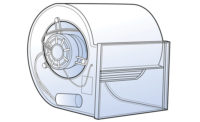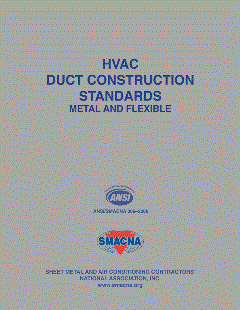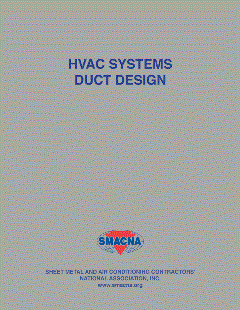A common frustration for contractors across the country is helping customers understand why their duct system needs an upgrade. A typical customer response you might hear is, “It’s worked this way for years, why do you need to fix it?”
How do you handle questions like this?
There is a formula that successful contractors use to answer such questions and generate customer interest in duct upgrades. Their approach focuses on the facts about what an HVAC system is doing — they don’t share opinions or use smoke and mirrors. This approach allows you to focus on your company’s skills, experience, and unique solutions. Let’s look at four steps you can use to recommend air upgrades to your customers.
STEP 1: MEASURE THE SYSTEM
To generate customer interest in duct upgrades, you need test results to discuss with them. Explain this testing using the example of a medical appointment.
Doctors measure blood pressure, weight, and temperature to uncover hidden problems before you go into an exam room. The doctor then discusses your overall health and provides an action plan based on those vital signs. You can use a similar method when you recommend duct upgrades, but only if you measure the HVAC system’s vital signs.
Use total external static pressure (TESP) as your first measurement. It will identify hidden system problems like blood pressure would for your doctor. Add filter and coil pressure drop to identify restrictive components. Then, measure duct pressures to reveal hidden issues in the supply and return ductwork.
Next, add fan airflow to your TESP measurements. Fan airflow serves the same purpose as a weight measurement because it points you in the right direction to correct excessive TESP. You might have too much or not enough airflow, depending on system needs. The solution to each problem is different.
Some contractors address room airflow problems with a balancing hood. They let their customers use it to measure problem rooms and identify the issues. This can be compared to a patient’s respiratory rate. I discussed how to estimate room airflow in six steps in a previous Duct Dynasty article (published May 28). Be sure to review it.
Temperature is the last system vital sign that looks at overall equipment and duct system performance. For purposes of this article, we’re going to stick with static pressure and airflow. Don’t worry, we’ll revisit how to add temperature to these steps in a future article.
After you take the static pressure and airflow measurements, diagnose any system issues you observe and document them. Photos and video work great for this too. Remember, test and diagnose before asking the customer any questions about hidden system problems.
STEP 2: ASK QUESTIONS
Once you complete testing and diagnostics, it’s time to ask questions. Your test results are the foundation for that conversation. Think about how a doctor would ask you questions related to your vital sign readings. If you have high blood pressure or are overweight, the doctor asks about your eating habits and lifestyle — things that would cause those readings. Discuss your HVAC system test results in a similar manner.
Some of you will want to reverse steps one and two — don’t. That’s what I did when I first started recommending duct upgrades, and my results were atrocious. I unintentionally damaged the customer’s trust when I asked questions about hidden system problems before I had any test results. It’s hard to recover from this mistake after your credibility is in doubt.
Use your test results as the foundation for any questions you ask. Then, if your customer wants to know why you’re asking, you can make the tie-in with your readings.
For example, when a system has high TESP, many focus their questions on uncomfortable rooms, dust, high utility bills, and continuous equipment problems. These problems commonly relate to excessive TESP and/or low fan airflow.
Be sure you write your customers’ answers down. This shows you’re listening and that you value what they say. If they tell you they can hang meat in their bedroom, capture it. It’s important to them, and addressing it could be the difference in getting the job or not.
Keep an open mind as you record their answers. What your customer wants might be totally different than what you think they need. Be careful spending their money for them and judging what they can afford. You might be surprised at the advanced options they choose if you simply offer them.
STEP 3: REPORT YOUR FINDINGS
With your questions answered, it’s time to let your customer know why you asked them — if they haven’t already asked. Again, consider the parallel to your last medical appointment. After you answer your doctor’s questions, they report their findings to you from your vital signs. You may need to confront some brutal truths and make important decisions at this time.
Start with praise for the good qualities you found with their system before you address the bad. When you start out addressing problems, most customers go on the defensive and will tune you out, regardless of how right you are. Consider your perception at this moment and work to see the issues you found through your customer’s eyes — not the eyes of a trained HVAC professional. It’s hard to go wrong if you follow the golden rule: “Treat others like you want to be treated.”
A quote I love from Quality Improvement Guru W. Edwards Deming is: “Without data, you’re just another person with an opinion.”
Unless you have test measurements, you don’t have data. The reason so many get beat up on price is because they only provide their customers with opinions instead of data and facts. Good data enables your customers to make informed decisions, and an informed customer is the best customer for duct upgrades.
Testing turns you into a knowledgeable guide armed with facts and solutions, not opinions and silver bullets.
Help your customer understand what is going on with their system and why it’s bad. Translate the test results in a simple manner — avoid being technical. If customers throat punched us every time we talk tech-speak, our word choice would improve greatly.
The static pressure to blood pressure comparison is easy to understand and works wonders in bridging technical lingo to simple words. One resource I’d like to offer is the National Comfort Institute’s (NCI’s) Static Pressure to Blood Pressure Table. If you would like a PDF copy, send me an email request.
STEP 4: CUSTOMER OWNERSHIP
As you report the findings to your customer, they still might not totally buy into what you’re telling them. The most successful diet and exercise changes occur when the doctor helps a patient develop their own plan. They make it their idea instead of forcing it upon them. When a customer provides input into system corrections, they take ownership of the design. It becomes their idea.
So include your customer as much as possible. The more you involve them, the better. Show how you value their input. You will probably be the first contractor in their home to do so. Create an experience for them to remember and tell others about.
Help them experience ownership of their potential new upgrades. Use simple explanations to describe how duct system changes will resolve their problems.
A balancing hood is your secret weapon in this experience. Let your customer use the hood to see how much airflow, or “boxes of air,” currently fill the problem room. Then have them compare the measurement against the estimated airflow needed. They will quickly imagine how much better the room will feel once upgrades are complete.
Use questions to guide this interactive discussion and get their input into alternative options for correction. This approach helps customers see their system through the same set of lenses that you do, and that differentiates you from the competition. If you’ve done your job and the situation is right, get ready to solve some comfort problems.
ARE YOU A SALESPERSON?
You can be the greatest problem-solver who ever lived, but if you don’t sell anything, nothing gets fixed. Sales isn’t a dirty word — we are all salespeople. The faster we realize this, the better off we are. Consider this: If you’re married, you’re a salesperson — you’ve convinced a special someone that you are worthy enough for them to spend the rest of their life with you. If that isn’t sales, I don’t know what is. You sold yourself, and that same lesson applies to duct upgrades too.
Remember, not everyone will want duct system upgrades when you identify the flaws. That’s OK. Your customers don’t have to buy from you unless they want to. To quote Weldon Long: “Your job is to diagnose problems and recommend solutions. Period. Your customer’s job is to buy or not to buy.”
Publication date: 12/17/2018
Want more HVAC industry news and information? Join The NEWS on Facebook, Twitter, and LinkedIn today!








